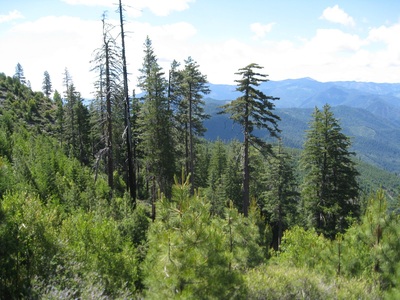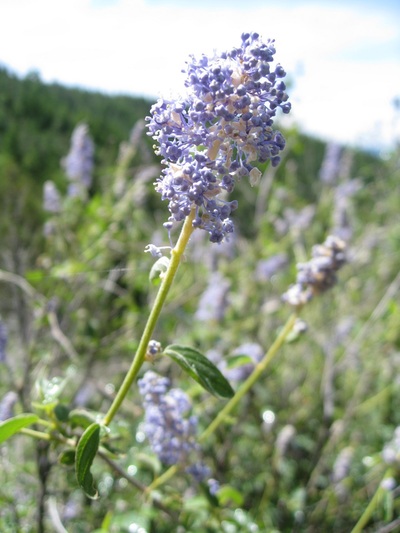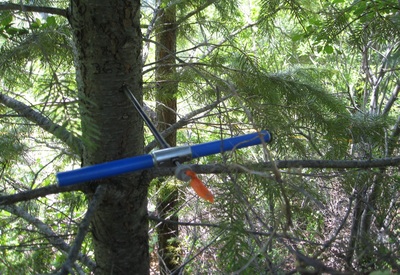N-FIXING SHRUBS AND POST-FIRE SUCCESSION: Klamath National Forest, CA
Plant-soil interactions have long been postulated to drive patterns of community succession. In particular, N-fixers are thought to increase the productivity of later successional species by ameliorating N-limitation. If later successional species are differentially limited by N, however, then the abundance and fixation rate of early N-fixers can also alter species dominance. My post-doctoral work with Steven Perakis and David Hibbs (Oregon State) used a climatic gradient in the Klamath region to investigate factors (e.g., climate, soils, competition) affecting N-fixation by early successional shrubs. I coupled studies of shrub N-fixation with studies of nutrient-limitation in dominant tree species to ask where on the landscape shrubs are most likely to add N inputs, and which tree species are most facilitated by soil N. I used 15N dilution studies to quantify N-fixation rates of shrubs, and employed structural equation models to compare fixation rates to abiotic and biotic variables. Although climate variables and soil phosphorus availability are often postulated to drive N-fixation rates, I found no direct links. Rather, climate governed tree productivity, which led to the suppression of N-fixing shrubs via competition. These results, which show that the greatest N-inputs occur where tree productivity is lowest, suggest that N-limitation in forests can be maintained by a spatial mismatch between N supply and demand.
publications (click on the journal name to access a pdf):
Yelenik, S.G., Perakis, S.S., and Hibbs, D. 2013. Regional constraints to N-fixation in post-fire forest
communities. Ecology, 94: 739-750.
publications (click on the journal name to access a pdf):
Yelenik, S.G., Perakis, S.S., and Hibbs, D. 2013. Regional constraints to N-fixation in post-fire forest
communities. Ecology, 94: 739-750.



